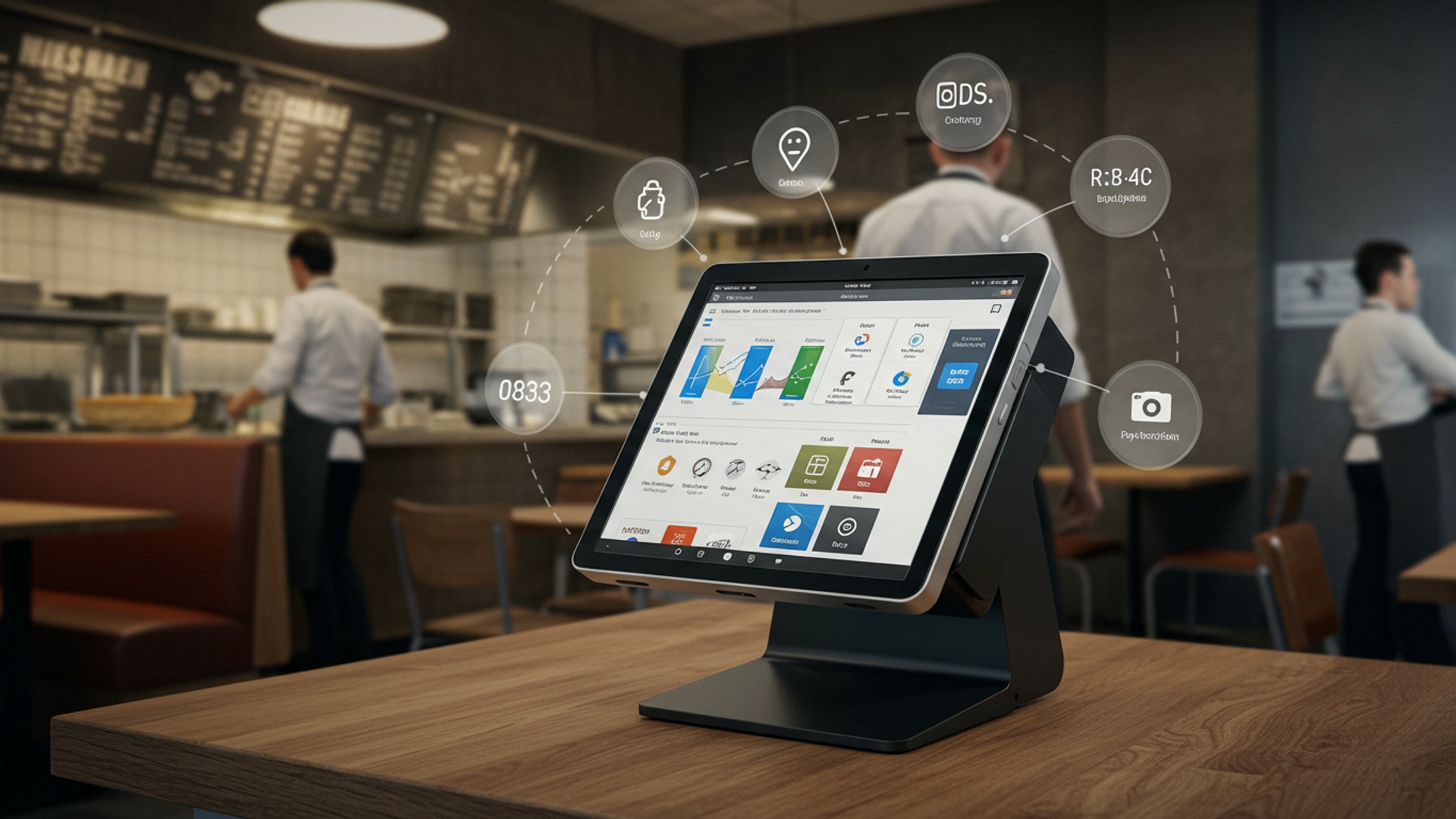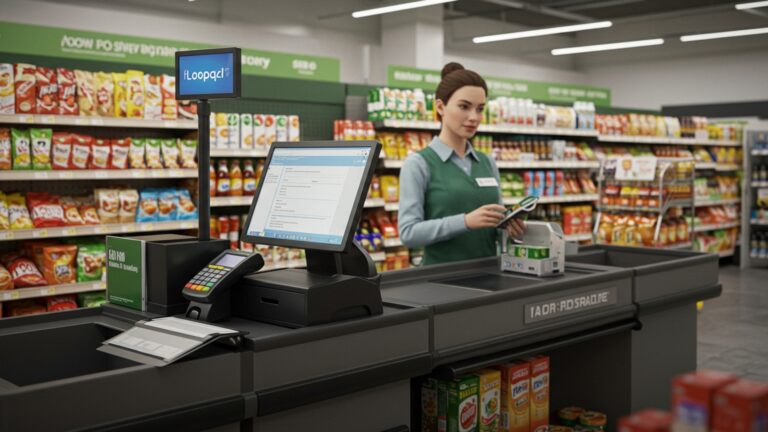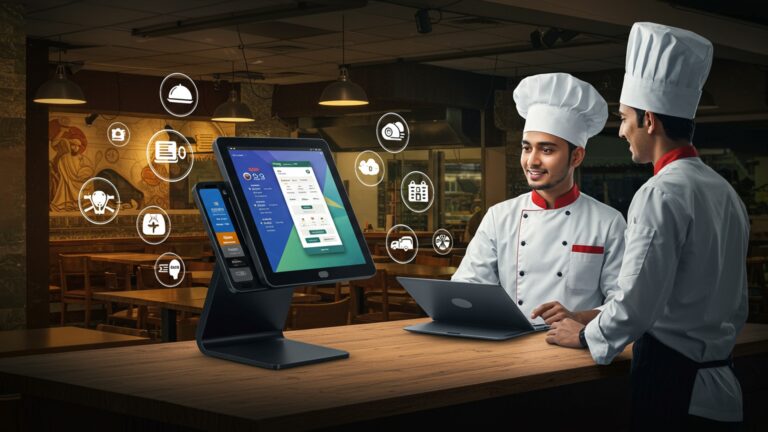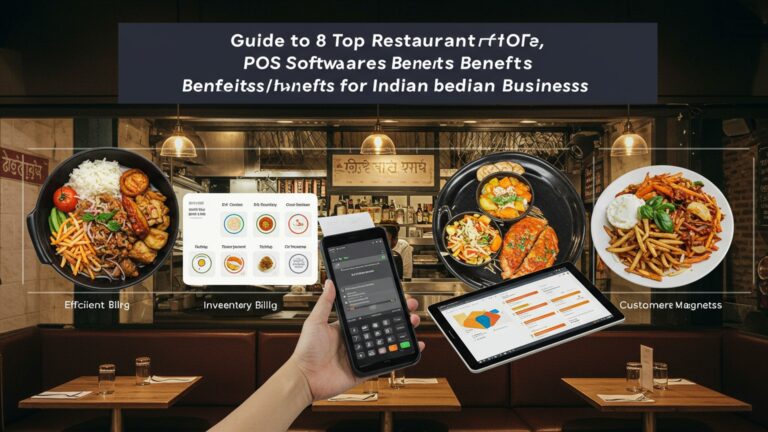Master Restaurant POS Software Essential Features to Boost Your Operations
The modern restaurant landscape demands more than just basic transaction processing; operators face increasing pressures from evolving consumer expectations for seamless digital experiences and the persistent challenge of optimizing labor costs. Robust restaurant POS software transforms operations from a mere point-of-sale into a strategic command center, integrating crucial functions like real-time inventory tracking, dynamic table management. sophisticated analytics. This digital backbone empowers establishments, from bustling cafes to fine dining, to streamline order flows, manage staff efficiently. leverage data for informed decisions, ultimately enhancing profitability and guest satisfaction in today’s competitive market where every operational advantage counts.

Understanding the Core of Restaurant POS Software
In the dynamic and competitive world of food service, efficiency, accuracy. customer satisfaction are paramount. A robust restaurant POS software system is no longer just a luxury; it’s a fundamental tool that underpins successful operations. POS, or Point of Sale, refers to the place where a transaction is completed. For restaurants, this means everything from taking orders and processing payments to managing inventory and tracking sales. Modern restaurant POS software goes far beyond a simple cash register, integrating various aspects of your business into a cohesive, streamlined platform designed to boost operational performance and profitability.
At its heart, a restaurant POS system is a centralized hub for all business activities. It automates tasks, minimizes human error. provides invaluable data insights, enabling restaurateurs to make informed decisions. Whether you run a bustling fine-dining establishment, a quick-service cafe, or a multi-location franchise, the right features in your restaurant POS software can significantly impact your bottom line and enhance the overall guest experience.
Essential Features for Streamlined Order Management
Efficient order management is the backbone of any successful restaurant, directly impacting service speed and customer satisfaction. A top-tier restaurant POS software provides a comprehensive suite of tools to handle orders seamlessly from start to finish.
- Intuitive Order Entry
- Table Management & Floor Plans
- Split & Merge Bills
- Course Management
- Takeout, Delivery. Drive-Thru Modes
Servers need to take orders quickly and accurately. A good POS system offers a user-friendly interface with customizable menu layouts, allowing staff to tap items, add modifiers (e. g. , “no onions,” “extra cheese”). send orders directly to the kitchen display system (KDS) or printers. This reduces errors and speeds up service.
Visual table layouts allow hosts and servers to see table status (occupied, vacant, waiting for food, paid), manage reservations. assign tables efficiently. This feature is crucial for optimizing seating arrangements and minimizing wait times, particularly during peak hours.
Handling group dining often involves splitting checks by item, evenly, or by specific diners. The software should make this process effortless, preventing manual calculations and potential disputes. Conversely, merging bills for guests who move tables or consolidate orders should also be straightforward.
For fine dining or multi-course meals, the ability to manage courses (appetizer, main, dessert) and send them to the kitchen at appropriate intervals ensures a smooth dining experience and prevents the kitchen from being overwhelmed.
A versatile restaurant POS software can adapt to different service models, managing separate queues, estimated wait times. specific order flows for each. Integration with third-party delivery platforms is also becoming a standard requirement.
Sophisticated Menu Management and Customization
Your menu is your restaurant’s core offering. the ability to manage it effectively within your restaurant POS software is critical for flexibility and profitability.
- Easy Menu Updates
- Modifiers and Upselling Prompts
- Ingredient-Level Tracking
- Pricing Tiers and Happy Hour
The software should allow for quick and easy updates to menu items, descriptions, prices. availability. This is invaluable for daily specials, seasonal changes, or adjusting prices based on ingredient costs.
Beyond basic item selection, the system should support complex modifiers (e. g. , cooking temperature, side dish choices, add-ons). Intelligent POS systems can also prompt servers with upsell suggestions (e. g. , “Would you like to add avocado to that burger?”).
For items with multiple components, the POS can be configured to deduct individual ingredients from inventory as a composite dish is sold. This ensures accurate inventory counts for complex menu items.
Implement different pricing tiers for various times of the day (e. g. , happy hour discounts, lunch specials) or for different customer segments (e. g. , loyalty program members).
Secure and Flexible Payment Processing
Payment processing is a critical touchpoint. your restaurant POS software must handle it with speed, security. versatility to meet diverse customer preferences.
- Integrated Payment Gateway
- Acceptance of Diverse Payment Types
- Tip Management
- PCI DSS Compliance
- Offline Mode
A fully integrated system means fewer errors, faster transaction times. simplified reconciliation. Non-integrated systems often require manual entry into a separate terminal, increasing the risk of mistakes.
From traditional credit and debit cards (EMV chip cards are now standard for security) to mobile payments (Apple Pay, Google Pay), gift cards. even contactless payments, the POS should accommodate all major methods.
Robust tip reporting and management features are essential for compliance and fair distribution among staff.
Ensuring your system adheres to Payment Card Industry Data Security Standard (PCI DSS) is non-negotiable for protecting customer data and avoiding hefty fines.
In case of internet outages, an advanced restaurant POS software should offer an offline mode to continue taking orders and payments, syncing data once connectivity is restored.
Intelligent Inventory Management
Managing inventory is one of the biggest challenges for restaurants, directly impacting food costs and waste. A powerful restaurant POS software system offers tools to keep track of every ingredient.
- Real-time Stock Tracking
- Supplier Management and Purchase Orders
- Recipe Management and Costing
- Waste Tracking
- Multi-Location Inventory
Automatically deduct ingredients as dishes are sold. This provides an accurate, up-to-the-minute view of stock levels, helping prevent stockouts of popular items and overstocking of slow-moving ones. For example, if your POS tracks chicken breast, it will automatically reduce the count every time a “Grilled Chicken Sandwich” is sold.
Streamline the ordering process by tracking supplier data, managing vendor contracts. generating purchase orders directly from the system based on par levels or reorder points.
Input recipes with exact ingredient quantities. The POS can then calculate the theoretical cost of each dish, helping you set profitable menu prices and monitor food cost percentages.
Accurately record spoilage, spills. returns. This data is crucial for identifying areas of waste and implementing corrective measures.
For businesses with multiple outlets, the software should allow centralized inventory management, enabling stock transfers and consolidated reporting.
Customer Relationship Management (CRM) and Loyalty Programs
Building a loyal customer base is vital for long-term success. Your restaurant POS software can be a powerful CRM tool.
- Customer Data Capture
- Loyalty Programs
- Personalized Marketing
- Feedback Collection
Collect customer data (name, email, phone number, order history) at the point of sale. This data is invaluable for personalized marketing efforts.
Implement points-based systems, tiered rewards, or special discounts for repeat customers. For instance, a coffee shop might offer a free drink after every ten purchases tracked via the POS.
Use collected data to send targeted promotions, birthday offers, or even reminders about their favorite dishes. This can significantly increase customer retention and average spend.
Some systems integrate with feedback tools, allowing customers to provide reviews directly, which helps in continuous service improvement.
Robust Reporting and Analytics
The data generated by your restaurant POS software is a goldmine for strategic decision-making. Comprehensive reporting and analytics are non-negotiable.
- Sales Reports
- Labor Reports
- Inventory Reports
- Customer Reports
- Customizable Dashboards
Gain insights into daily, weekly, monthly. annual sales performance. review sales by item, category, time of day, or server to identify trends and best-selling dishes.
Track employee hours, sales performance per employee. labor costs. This helps in optimizing staffing levels and managing payroll efficiently.
comprehend ingredient usage, waste. stock discrepancies. These reports are crucial for managing food costs and preventing theft.
Identify your most loyal customers, their spending habits. popular items, enabling targeted marketing strategies.
Modern POS systems offer customizable dashboards that provide a real-time overview of key performance indicators (KPIs) at a glance, from sales figures to table turnover rates.
Employee Management Capabilities
Managing your team effectively is just as crucial as managing your menu. The right restaurant POS software can simplify staff operations.
- Time Clock Management
- Access Permissions
- Performance Tracking
- Shift Management
Allow employees to clock in and out directly through the POS, ensuring accurate timekeeping for payroll.
Assign different roles and permissions to staff members (e. g. , servers can only take orders, managers can access reports and make price changes). This enhances security and accountability.
Monitor individual server sales, average check size. tip amounts. This data can be used for training, performance reviews. identifying top performers.
Some advanced systems offer basic shift scheduling tools or integrate with dedicated scheduling software.
Cloud-Based vs. On-Premise Restaurant POS Software: A Comparison
When selecting a restaurant POS software, one of the fundamental decisions is whether to opt for a cloud-based or on-premise system. Each has distinct advantages and considerations.
| Feature | Cloud-Based POS (SaaS) | On-Premise POS |
|---|---|---|
| Data Storage | Data stored securely on remote servers (cloud). Accessible from anywhere with internet. | Data stored on local servers within the restaurant. |
| Cost Model | Subscription-based (monthly/annually). Lower upfront cost. | Larger upfront investment for hardware, software license. installation. |
| Accessibility | Highly accessible via any internet-connected device (tablet, smartphone, desktop). Remote management. | Primarily accessible from within the restaurant network. Remote access often requires complex VPN setup. |
| Updates & Maintenance | Automatic software updates and maintenance handled by the vendor. | Manual updates and maintenance, often requiring IT staff or vendor visits. |
| Security | Managed by vendor with robust security protocols, regular backups. disaster recovery. | Security is the restaurant’s responsibility, requiring dedicated IT and backup solutions. |
| Scalability | Easily scalable for new locations or increased volume with simple subscription adjustments. | Scaling often requires significant hardware upgrades and additional software licenses. |
| Internet Dependency | Requires a stable internet connection for full functionality (though many offer offline modes). | Less dependent on internet for core operations. may need it for external integrations. |
The trend is strongly towards cloud-based solutions due to their flexibility, lower initial cost. ease of maintenance, making them particularly attractive for small to medium-sized businesses and multi-location enterprises alike.
Advanced Integrations and Future-Proofing
A truly powerful restaurant POS software doesn’t operate in a vacuum; it integrates seamlessly with other essential business tools.
- Kitchen Display Systems (KDS)
- Online Ordering Platforms
- Accounting Software
- Reservations Systems
- CRM & Marketing Tools
Integration with a KDS streamlines kitchen operations, displaying orders digitally, tracking preparation times. reducing paper waste and miscommunications.
Direct integration with your website’s online ordering system or third-party delivery services (e. g. , Uber Eats, DoorDash) funnels orders straight to the POS, eliminating manual entry and potential errors.
Sync sales, expense. payroll data directly with popular accounting platforms (e. g. , QuickBooks, Xero), simplifying bookkeeping and financial reporting.
For establishments that rely on bookings, integration with reservation software (e. g. , OpenTable, Resy) can provide a holistic view of table availability and customer preferences.
Beyond basic loyalty, integration with advanced CRM and marketing automation platforms allows for highly sophisticated customer engagement strategies.
Real-World Impact and Actionable Takeaways
The tangible benefits of implementing a comprehensive restaurant POS software are far-reaching, directly influencing operational efficiency, customer satisfaction. ultimately, profitability.
- Reduced Order Errors
- Faster Service
- Optimized Inventory & Reduced Waste
- Enhanced Customer Experience
- Data-Driven Decision Making
- Improved Employee Productivity
Digital order entry drastically cuts down on miscommunications between front-of-house and back-of-house staff, ensuring customers receive exactly what they ordered. This not only saves on food waste but also enhances guest experience.
From quick order entry to streamlined payment processing and KDS integration, a good POS system shaves minutes off service times, leading to higher table turnover and increased revenue, especially during busy periods.
Real-time inventory tracking and recipe costing mean you know exactly what you have, what you need. what your dishes truly cost. This allows for precise ordering, minimizing spoilage and overstocking, which can often account for significant financial losses.
Personalized service through CRM features, faster checkout. consistent order accuracy contribute to happier customers who are more likely to return and recommend your establishment. For instance, using data from your restaurant POS software, you could automatically send a discount on a customer’s favorite dish if they haven’t visited in a while, encouraging repeat business.
The wealth of reports and analytics empowers managers and owners to identify sales trends, pinpoint popular menu items, optimize staffing levels. grasp peak performance times. This data is invaluable for strategic planning, menu engineering. marketing efforts.
By automating mundane tasks and providing intuitive tools, staff can focus more on customer interaction and less on administrative overhead. Clear employee performance reports can also guide training and incentive programs.
When evaluating a restaurant POS software, consider these actionable takeaways:
- Prioritize Your Needs
- Scalability is Key
- User-Friendliness
- Reliable Support
- Integration Capabilities
List the specific challenges and goals of your restaurant. Do you need strong inventory, robust online ordering, or advanced table management? Let your needs guide your feature requirements.
Choose a system that can grow with your business, whether you plan to expand your menu, add locations, or integrate new technologies.
An intuitive interface for both front-of-house and back-of-house staff is crucial for quick adoption and minimal training time. A system that is difficult to use will lead to errors and frustration.
Ensure the vendor offers 24/7 technical support and has a strong reputation for customer service. Downtime in a restaurant can be catastrophic.
Verify that the POS can integrate with your existing or planned third-party tools like accounting software, online ordering platforms. payroll systems.
Conclusion
Mastering your restaurant POS software transcends mere transaction processing; it’s about orchestrating a seamless operational symphony. My personal tip is to actively engage with your system’s data analytics, treating it as your kitchen’s crystal ball. For instance, in today’s dynamic market, leveraging features that integrate online ordering directly with kitchen display systems (KDS) can dramatically cut wait times and errors, a crucial advancement I’ve seen transform many local eateries during peak hours. This proactive approach, rather than simply reacting, allows you to optimize everything from ingredient sourcing based on sales trends to dynamically updating digital menus with real-time stock levels, preventing the dreaded “we’re out of that” moment. By continuously refining your POS utilization, you’re not just streamlining billing; you’re building a foundation for sustainable growth, ready to adapt to new trends like tableside ordering via mobile POS. The journey to operational excellence is continuous. your restaurant POS is an indispensable partner. Embrace its full potential. watch your business thrive, offering exceptional service that keeps customers returning.
More Articles
Essential Guide How to Pick the Right Restaurant POS Software for Your Eatery
How to Choose the Best Cloud Based POS Software for Your Growing Business
Learn How to Streamline Billing and POS Software for Seamless Business Operations
Unlock Sales Power How to Use Mobile POS Software on the Go
FAQs
How does this POS software make taking orders easier and faster?
It streamlines the entire order process, from taking orders on various devices like tablets to sending them directly to the kitchen or bar. This significantly reduces errors, speeds up service. ensures accurate order fulfillment, helping your team serve guests more efficiently.
Can it help me keep track of my ingredients and prevent waste?
Absolutely! The software includes robust inventory management tools that track ingredients in real-time. You’ll get alerts for low stock, monitor usage trends. even manage recipes, helping you reduce waste, control costs. make smarter purchasing decisions.
Is it good for managing tables and seating guests efficiently?
Yes, it offers intuitive table management features. You can easily visualize your restaurant layout, see which tables are occupied, available, or reserved, manage waitlists. optimize seating arrangements for better customer flow and reduced waiting times during peak hours.
What kind of insights can I get from this software to improve my business?
It provides comprehensive reports and analytics on sales trends, popular menu items, peak hours, staff performance. more. These insights are crucial for making informed decisions on menu engineering, staffing levels. promotional strategies to boost profitability and operational efficiency.
How does the POS handle different payment methods?
This software supports a wide range of payment options, including cash, all major credit/debit cards, mobile payments. even split bills. It integrates seamlessly with various payment processors for quick, secure. flexible transactions, accommodating all your customers’ preferences.
Can it help me manage my staff’s shifts and performance?
Definitely. It includes features for employee management, allowing you to track clock-ins/outs, manage shifts and schedules, monitor individual sales performance. even set access permissions. This simplifies payroll, improves accountability. helps you optimize your team’s productivity.
Does it have any features to help build customer loyalty?
Yes, many master POS systems come with built-in CRM (Customer Relationship Management) and loyalty program capabilities. You can collect customer data, manage loyalty points, offer custom discounts. run targeted promotions to encourage repeat business and strengthen customer relationships.




